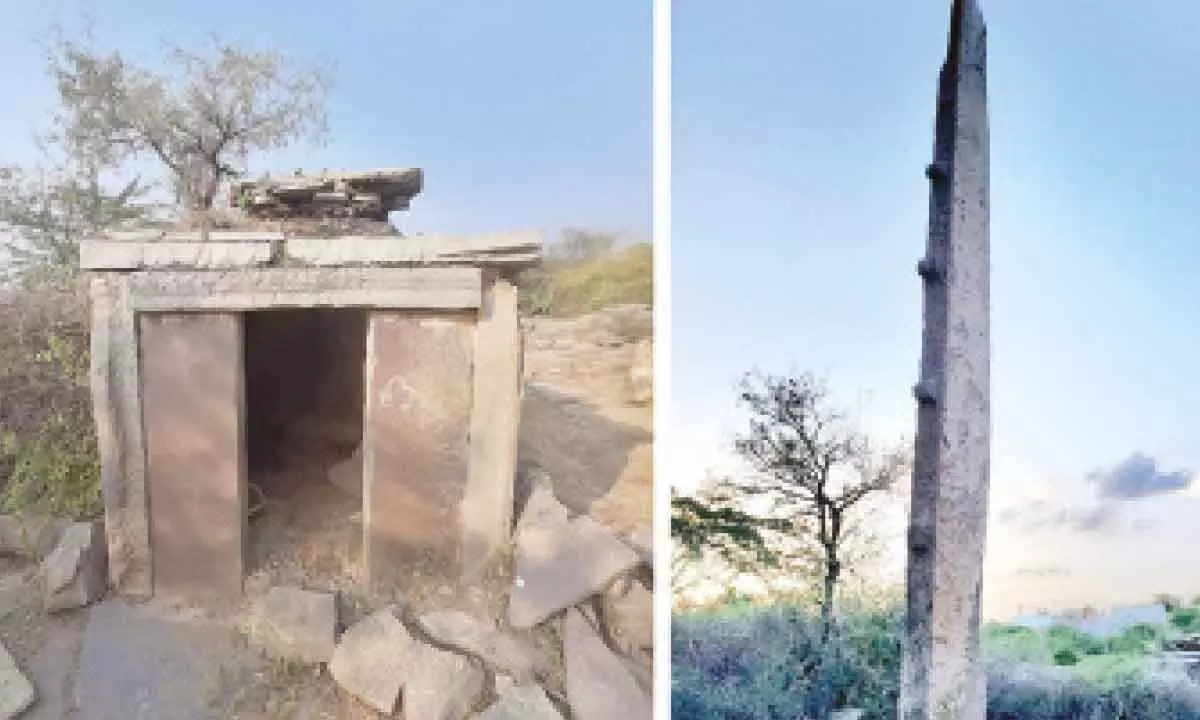In Mudimanikyam village in Nalgonda district, Telangana, an important discovery has been made that provides insight into the trade connections of the region during the early medieval period. The village, located about 180 km from Hyderabad, used to be ruled by the Qutub Shahi rulers. European travelers, like Jean-Baptiste Tavernier, who visited the Hyderabad kingdom, wrote detailed accounts of their journeys and give us information about the trade routes at that time.
Archaeologists have found a 20-foot-tall ancient lamp post, called Deepastambham, in the area. The lamp post has niches for lamps and inscriptions in multiple languages, which reveal more about the cultural and commercial exchanges of the time.
While flag poles are commonly seen in Indian temples, the presence of lamp posts in this region is quite rare. Lamp posts are more commonly found in temple complexes along the West Coast, like in Goa.
The inscription on the lamp post, studied by M Munirathnam Reddy from the Archaeological Survey of India (ASI), dates it back to June 1635. The inscription is a mix of Telugu and Tamil languages, showing the cultural blending that was happening at that time.
The lamp post, dedicated to Kasi Viswanatha, had a significant height and served as a guidance beacon for navigators along the riverine trade route. Its strategic placement and tall stature made it an important landmark for traders and travelers, helping them in their journeys along the commercial arteries of the region.
The inscription on the lamp post was engraved by Madiraju Narasayya of Yidupulapati and erected by Polinedu, son of Vali Munulayya.











